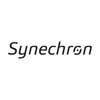Filter interviews by
DNV GL Interview Questions and Answers
DNV GL Interview Experiences
6 interviews found
I applied via Conultancy and was interviewed before Apr 2022. There were 2 interview rounds.

(2 Questions)
- Q1. Job profile related only
- Q2. What are types damage mechanism inspected
- Ans.
Various types of damage mechanisms are inspected in API plant inspection.
Corrosion
Erosion
Cracking
Fatigue
Brittle Fracture
Creep
Hydrogen Damage
Sulfidation Corrosion
High Temperature Hydrogen Attack
Stress Corrosion Cracking
Microbiologically Induced Corrosion
Api Plant Inspector Interview Questions asked at other Companies
I applied via Referral and was interviewed in Jul 2023. There were 3 interview rounds.

(2 Questions)
- Q1. Confidential , it is all about the personnal ability
- Q2. Interview is like a conversation between the employer and employee . we should not reveal the conversation.
(1 Question)
- Q1. Are you ready to join in our company immedietely
Quality Supervisor Interview Questions asked at other Companies
I applied via LinkedIn and was interviewed in Mar 2023. There were 2 interview rounds.

(3 Questions)
- Q1. What is Accrual
- Q2. What are your Strength and weakness
- Q3. What is investment banking
Interview Preparation Tips
- Financial Accounting
- Investment Banking Operations
Financial Analyst Interview Questions asked at other Companies
I applied via Recruitment Consulltant and was interviewed in Jan 2023. There were 2 interview rounds.

(2 Questions)
- Q1. Asking about pervious projects learning points. Trouble shooting problems
- Q2. Describe Surface preparation standards
- Ans.
Surface preparation standards ensure proper cleaning and treatment of surfaces before coating application.
Surface preparation standards vary depending on the type of coating and substrate.
Standards may include cleaning, degreasing, sanding, and priming.
Examples of standards include SSPC-SP1 for solvent cleaning and SSPC-SP10 for abrasive blasting.
Proper surface preparation is crucial for coating adhesion and durability
Interview Preparation Tips
Coating and Painting Inspector Interview Questions asked at other Companies
DNV GL interview questions for popular designations
I applied via Referral and was interviewed in Aug 2021. There were 3 interview rounds.
Interview Questionnaire
1 Question
- Q1. Salary expectation
- Ans. As my expectation attractive will given.
Interview Preparation Tips
Inspection Engineer Interview Questions asked at other Companies
I applied via LinkedIn and was interviewed in Dec 2020. There were 3 interview rounds.
Interview Questionnaire
1 Question
- Q1. Basic questions related to your experience and applied questions to check your emotional quotient
Interview Preparation Tips
Junior Accountant Interview Questions asked at other Companies
Top trending discussions






Interview questions from similar companies

Interview Questionnaire
2 Questions
- Q1. Oops and database modelling
- Q2. Design Book my show

I applied via Recruitment Consultant and was interviewed in May 2021. There was 1 interview round.
Interview Questionnaire
1 Question
- Q1. Very basic qutions

Business Analyst Interview Questions & Answers
Collabera Technologiesposted on 2 Nov 2021
I applied via Referral and was interviewed before Nov 2020. There were 3 interview rounds.
Interview Questionnaire
4 Questions
- Q1. All about agile
- Q2. Scrum ceremonies
- Q3. SDLC process and other processes
- Q4. Documentation and Testing
Interview Preparation Tips

Interview Questionnaire
5 Questions
- Q1. Cte vs temp table
- Ans.
CTE and temp tables are used to store intermediate results in SQL queries.
CTE stands for Common Table Expression and is defined within a query.
Temp tables are created in the tempdb database and can be accessed across sessions.
CTEs are generally faster and more readable than temp tables.
Temp tables are useful for complex queries with multiple steps or when data needs to be manipulated.
CTEs are useful for recursive queri
- Q2. Parameter sniffing
- Q3. Asynchronous programming in .net
- Ans.
Asynchronous programming in .NET allows for non-blocking execution of code, improving performance and responsiveness.
Async and Await keywords used to implement asynchronous programming
Allows for parallel execution of multiple tasks
Improves performance and responsiveness of applications
Examples include web applications, file I/O operations, and database queries
- Q4. Threading in .net
- Ans.
Threading in .NET allows for concurrent execution of code, improving performance and responsiveness.
Threading allows for multiple threads of execution to run concurrently
Thread class is used to create and manage threads
Thread synchronization is important to prevent race conditions and deadlocks
Async/await is a newer approach to concurrency in .NET
TPL (Task Parallel Library) provides higher-level abstractions for concur
- Q5. Performance tuning of SQL stored procedure
- Ans.
Performance tuning of SQL stored procedure involves optimizing query execution time and reducing resource usage.
Identify and optimize the most resource-intensive queries
Use appropriate indexing and partitioning techniques
Minimize network round trips and data transfers
Avoid using cursors and temporary tables
Use query hints and plan guides to influence query execution plan
Regularly monitor and analyze query performance u...
Skills evaluated in this interview
DNV GL Interview FAQs
Tell us how to improve this page.
DNV GL Interviews By Designations
Interview Questions for Popular Designations
DNV GL Interview Process
based on 4 interviews
Interview experience
Interview Questions from Similar Companies
DNV GL Reviews and Ratings
based on 102 reviews
Rating in categories
|
Junior Accountant
19
salaries
| ₹5 L/yr - ₹6 L/yr |
|
Inspection Engineer
17
salaries
| ₹6.3 L/yr - ₹10.2 L/yr |
|
Accountant
14
salaries
| ₹5.5 L/yr - ₹9.9 L/yr |
|
Mechanical Surveyor
14
salaries
| ₹5 L/yr - ₹9 L/yr |
|
Surveyor
8
salaries
| ₹6 L/yr - ₹8.7 L/yr |

Synechron

Movate

Sopra Steria

NCR Corporation
- Home >
- Interviews >
- DNV GL Interview Questions









